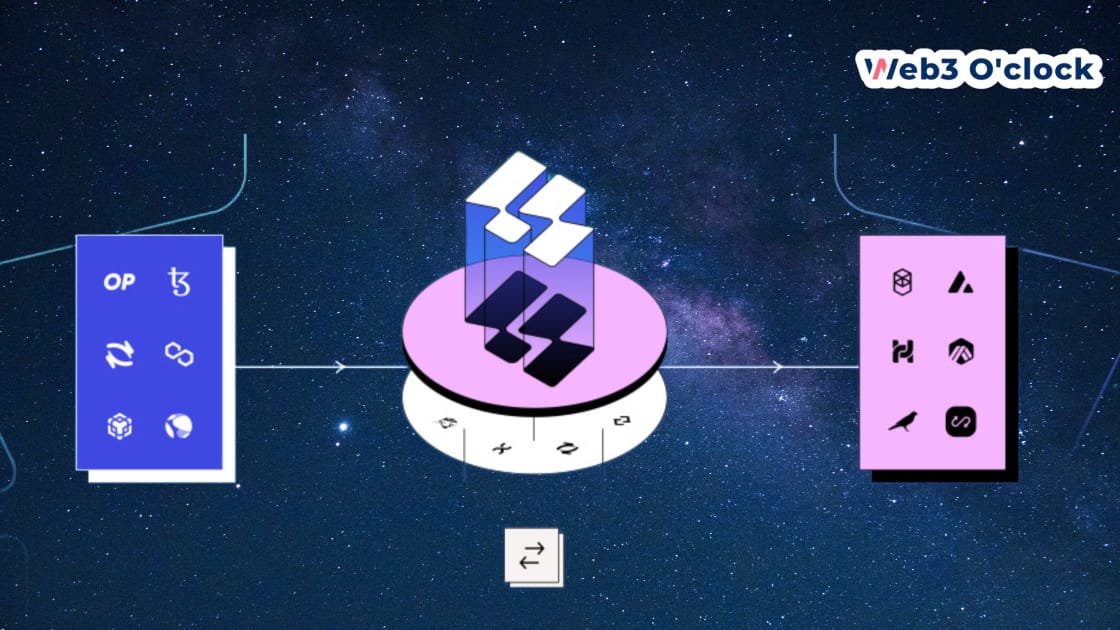In the rapidly evolving world of blockchain and cryptocurrencies, governance plays a crucial role in ensuring the stability and security of various protocols and applications. A recent development in this realm is the launch of a multi-bridge governance solution by LiFi, a multichain bridging protocol. This solution aims to address the challenges posed by cross-chain communication and enhance the effectiveness of decentralized autonomous organization (DAO) governance.
The Need for Cross-Chain Governance
Decentralized exchanges, lending platforms, and other Web3 protocols have been exploring ways to extend their presence across multiple blockchain networks. However, this expansion introduces complexities related to governance. The Uniswap community, for instance, faced a significant dilemma when it contemplated deploying a copy of its protocol on the Binance Smart Chain (BSC). This raised questions about how governance decisions could be made across different chains, given that the previous system relied on votes exclusively from the Ethereum network.
The Bridge Security Debate
In the case of Uniswap, the choice of bridge technology became a point of contention. The DAO responsible for governing Uniswap, known as UniswapDAO, initially voted to deploy a second instance of the protocol on BSC using the Celer bridging protocol. However, concerns emerged regarding the security of Celer and its potential vulnerability to cross-chain governance attacks. Some participants advocated for alternatives like Wormhole, LayerZero, or DeBridge.
The debate culminated in a referendum, wherein the community voted Wormhole as the official bridge for cross-chain governance. Nevertheless, the controversy underscored the need for a more robust solution to prevent potential attacks originating from cross-chain bridges.
Introducing LiFi’s Multi-Bridge Aggregator
Addressing these challenges, LiFi has unveiled a multi-bridge aggregator designed to enhance DAO governance across different chains. This solution offers a forward-looking approach to cross-chain messaging needs, eliminating the reliance on a single bridge for governance communications. The aggregator enables protocols to require confirmation of votes through multiple bridges, thereby mitigating the risk of malicious messages infiltrating the governance process.
How Does the Aggregator Work?
LiFi’s aggregator empowers protocols to set specific requirements for vote confirmation. For instance, a protocol can mandate that a vote must be confirmed by at least two out of three selected bridges to be considered valid. This approach ensures that the governance decision aligns with the majority consensus across different chains. The flexibility of the aggregator also allows protocols to adjust the required bridge confirmations based on their unique needs.
The aggregator’s mechanism safeguards against potential attacks. In the event that one bridge is compromised and sends a fraudulent vote, the other bridges’ confirmations will counteract the malicious message, preventing it from affecting the governance outcome. This multi-bridge approach bolsters the security and integrity of cross-chain governance processes.
A Shared Endeavor
LiFi’s initiative is not the only one in this space. Gnosis, another prominent player, introduced a similar protocol named “Hashi” to address cross-chain governance challenges. However, Hashi faced criticisms related to its readiness for production and security features.
LiFi, too, acknowledges the importance of ensuring the aggregator’s security and reliability. While the solution has not yet undergone a formal audit, LiFi‘s research lead, Arjun Chand, has stated their intent to expand testing and subject the aggregator to a thorough audit by Trail of Bits, a respected security firm.
Conclusion
The evolution of decentralized governance is a dynamic process, marked by challenges and innovative solutions. LiFi’s multi-bridge aggregator represents a significant step forward in enhancing the security and effectiveness of cross-chain DAO governance. By enabling protocols to confirm votes through multiple bridges, this solution minimizes the potential risks associated with single points of failure and attacks originating from cross-chain bridges. As the blockchain landscape continues to grow and diversify, solutions like LiFi’s aggregator contribute to a more resilient and secure decentralized ecosystem.
FAQs
1. What is LiFi’s multi-bridge governance solution, and why is it important for decentralized autonomous organizations (DAOs)?
LiFi’s multi-bridge governance solution is a novel approach designed to enhance the governance processes of decentralized autonomous organizations (DAOs) operating across different blockchain networks. Traditional DAOs often face challenges when they expand to multiple chains, as making governance decisions becomes complex due to the lack of a unified voting mechanism. LiFi’s solution addresses this challenge by allowing DAOs to confirm votes through multiple bridges, ensuring that decisions are aligned with consensus across different chains. This prevents attacks and manipulation attempts that may arise from vulnerabilities in single bridge solutions.
2. How does LiFi’s multi-bridge aggregator work, and how does it enhance security in cross-chain governance?
LiFi’s aggregator empowers protocols to require votes to be confirmed through multiple bridges. For instance, a protocol can stipulate that a vote must receive confirmation from at least two out of three selected bridges to be considered valid. This approach prevents malicious messages from compromised bridges, as confirmations from other secure bridges counteract any fraudulent attempts. In essence, this multi-bridge approach creates a robust and tamper-resistant system, enhancing the security and integrity of cross-chain governance processes.
3. How does LiFi’s multi-bridge solution differ from other similar solutions in the market, like Gnosis’ Hashi protocol?
LiFi’s multi-bridge solution is one of the approaches aimed at addressing the challenges of cross-chain governance, similar to Gnosis’ Hashi protocol. Both solutions intend to enhance the security and effectiveness of decentralized governance processes across different chains. However, LiFi’s approach differentiates itself by its emphasis on requiring confirmations from multiple bridges to validate votes. This reduces the risk of relying on a single point of failure and provides added security against malicious attacks originating from compromised bridges. Additionally, while both solutions share the same objective, they might have variations in their implementation, readiness, and security features, making them distinct choices for projects seeking to enhance their cross-chain governance mechanisms.











